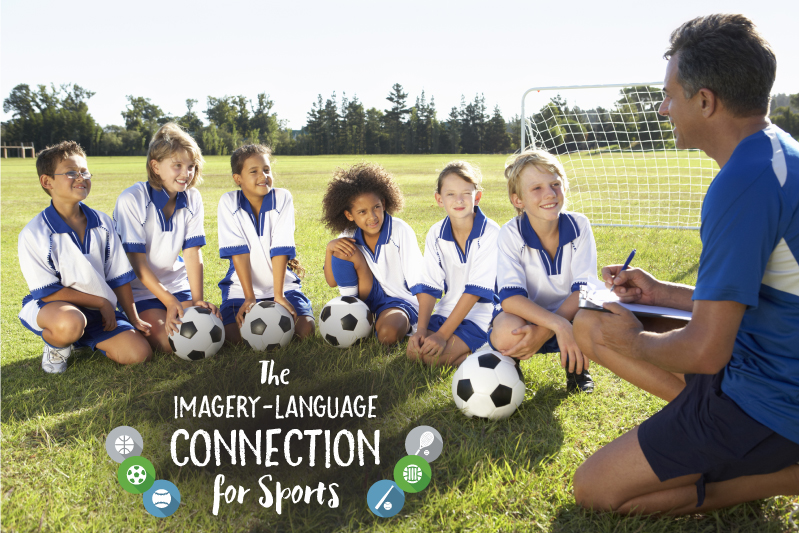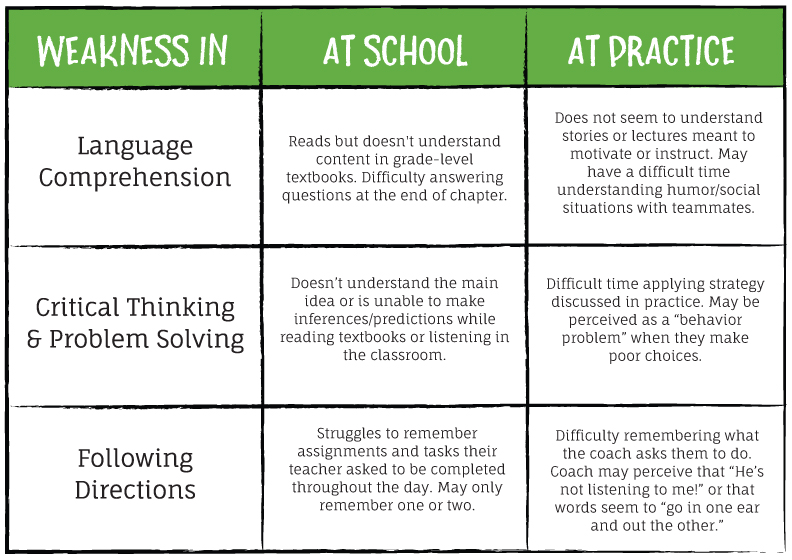Tips for Coaching Youth Sports: The Imagery-Language Connection for Sports
Did you recently volunteer for a coaching position? Have you coached before? Are you tired of yelling at your team but don’t know how to get them to follow directions? Do you want this year to be a more positive experience for you and your players? If you answered yes to any of these questions, a few simple changes to the language you use as a coach may help you create the success you’re looking for.
As a coach, it’s important to understand that your team is comprised of many players with different personalities as well as learning abilities. You may have a player, or players, with an identified comprehension weakness, or an ADHD diagnosis. Parents often pursue help for their child’s academics, but may not realize that their language comprehension concerns can also affect their performance in other areas of life, including sports.
A primary cause of language comprehension problems is difficulty creating an imagined gestalt (whole). This is called weak concept imagery. This weakness causes individuals to understand only “parts” of information they read or hear, but not the whole.
Check out some examples of how concept imagery issues can affect a child at school and on the field or court:
The imagery-language connection is necessary for good thinking and communication, which is essential for a team to be successful. You may be able to help a struggling player (and the whole team!) by modifying the language you use while coaching. See the following tips for how to strengthen the imagery-language connection for your players:
Give Instructions
Establish the imagery-language connection to stimulate thinking and make sure you check for understanding. For example, when giving your team instructions for a drill (e.g. “Dribble the ball to the far left cone. Leave it there and sprint back to the goal”), have them visualize the activity you are describing, and call on individuals to recall what they are picturing.
Discuss Strategies
Help your athletes monitor their understanding of their actions, as well as problem solving skills, by targeting specific images they’re creating. Teach them to continually ask themselves whether they understand what the consequences may be of certain actions, and if they’re able to picture the outcome: “If I do this, what might happen? What does that look like?”
Introduce New Vocabulary
Similar to subjects in school, sports have their own unique vocabulary. It’s important to ask questions, such as “What do you picture for for the words inning, dribble, defense, out of bounds, and guard?” Many coaches already familiar with the sport assume their players understand and are able to visualize these vocabulary words and concepts. Identify your sport’s key words and phrases and ask players to visualize them. They should be able to tell you what they are picturing. If they don’t have a picture, they will have a difficult time understanding what the word or concept means. Create a diagram on a whiteboard or provide examples to assist with their understanding.
Post Game Recap
During discussions with your team after the game, ask imagery-stimulating questions. For example, instead of just asking, “What do you think we need to work on?” you can add, “What do you see yourself doing differently? What does that look like?” You can expand upon these questions to dive into their images even more, by adding choice/contrast questions like, “Do you you see yourself running faster or slower?” or “Do you picture yourself in the same part of the field as you were today or are you moving around more?”
If you need further information or have questions regarding ways to address language comprehension weakness, please contact us at 800.300.1818.







